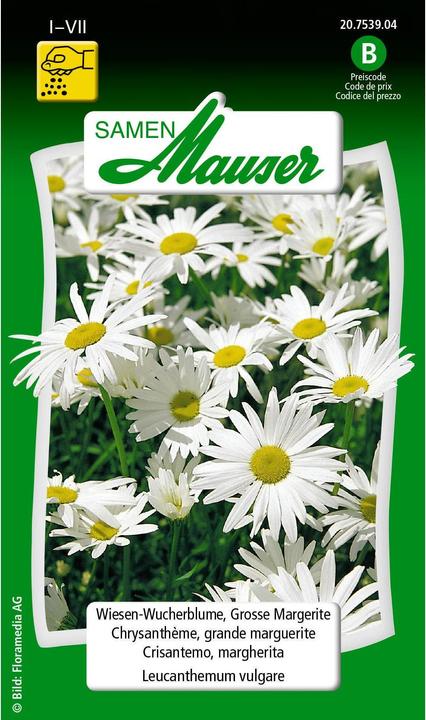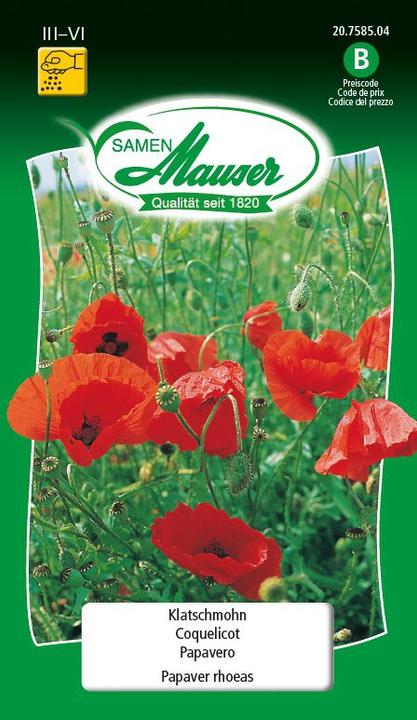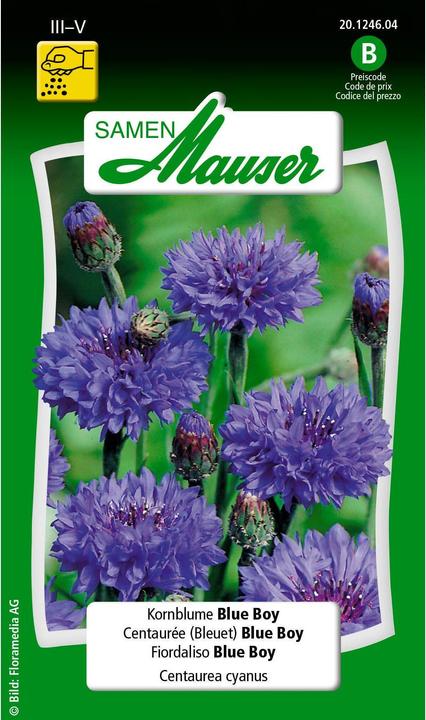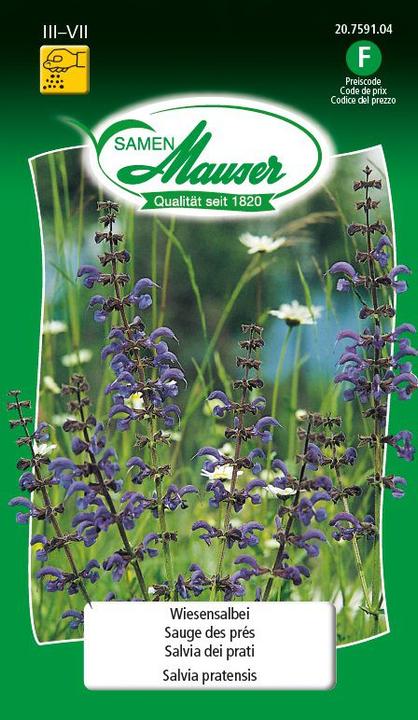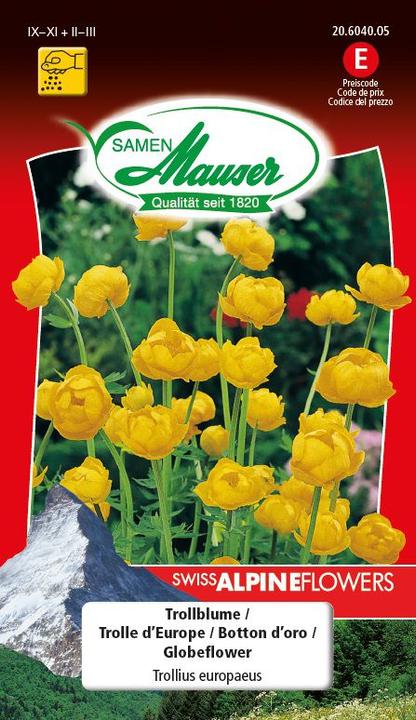

A flower meadow for biodiversity
They have become a rare sight in Switzerland. Flower meadows have given way to agriculture, house building and green lawns. With your own flower meadow in the garden, you can counteract this trend and create a habitat for flora and fauna.
Delicate blades of grass sway in the wind, colourful flowers are visited by fat bumblebees. A butterfly opens its artistically designed wings in the warming sunlight. Small animals feel right at home in colourful flower meadows. No wonder. Over 50 per cent of native plant species are at home there and serve as a food source, shelter and nesting place for bees, grasshoppers and the like.
However, in recent decades, almost 90 per cent of Switzerland's flower meadows have disappeared due to agriculture and housing development - and with them the habitat of many animals and plants. That's why we need to be proactive. Transform part or even all of your garden into a colourful landscape. Not only does it look pretty, it is also easier to maintain than a lawn.
Planning
Scattering seed packets around wildly does not create a flower meadow. It can take years for a stable ecosystem to develop. That's why patience and determination are the two most important qualities when creating a near-natural meadow. Once you have these, a little planning is required.
What do you want to use the area for in the future?
There is no one right way to create a near-natural garden. Adapt the nature of your meadow to your needs so that you can enjoy it in the long term.
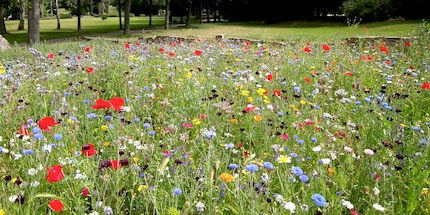
Flower lawn
Do you like lying in the sun and want to play with the children in your garden from time to time? Then a flower lawn is ideal. In addition to the usual grasses, you can integrate low-growing wildflowers. Bees and other insects will visit you more often in search of nectar.
Flower meadow
If your chosen area is only rarely visited, you can convert it into a species-rich flower meadow. A variety of plants thrive in sunny and nutrient-poor areas in particular. A flower meadow is also possible in shady locations with nutrient-rich soil, but it will probably be dominated by grasses. You no longer need a lawnmower, but a scythe. The meadow is trimmed twice a year.
Flower island
You want a flower meadow, but can't or don't want to give up your entire garden for it? Then create one or more flower islands. Areas of one square metre or more are sufficient. If your island is surrounded by lawn, make sure you don't fertilise it. Otherwise, it will work in the same way as a large flower meadow.
Which plants suit your location
In principle, you can create species-rich meadows in any location, but you need to choose the right seeds. To do this, it is important to know what conditions prevail in your garden. Is it moist and shady or very sunny? Is the soil almost clay-like or rather loose and permeable? Flower meadows feel most at home in areas that have not been fertilised or composted for a long time.
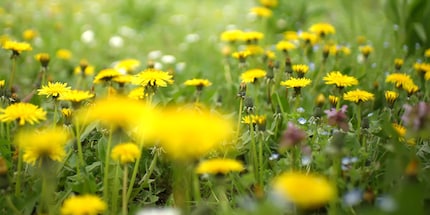
Fat meadow
These are areas that are often fertilised and rarely watered and are therefore rich in nutrients. Particularly suitable flowers are:
- Dandelion
- Cowslip
- Crowfoot
- Labwort
- Sorrel
- Meadow daisy
Low-nutrient meadow
Nutrient-poor meadows are the opposite of rich meadows. A few examples of suitable seeds are:
- Common yarrow
- Ragwort
- Corn poppy
- Cornflower
- Wild orchid
- Meadow sage
- Eparsette
Wet meadow
As the name suggests, wet meadows are damp, wet areas characterised by a high groundwater content. There are also particularly suitable flowers for this:
- Marsh marigold
- Hellwort
- Bloodroot
- Cabbage thistle
- Pipe grass
- Troll flower
Regardless of the nature of your area, annual plants are taboo. They do nothing to create a species-rich meadow as they only flower once. Go for native, perennial seeds that reproduce independently if possible.
Seeding
If you have a lush green lawn, it needs to be removed first. Otherwise, the flower meadow would hardly establish itself, but would be displaced again and again by the grasses. Make sure that you really remove all the roots and weeds, otherwise the old plants will come back. Once none of the old vegetation is visible and the soil has been loosened up, you can get started.
It is best to sow your flower meadow between mid-April and June. Stick to the recommended seed quantity on the packet. More seeds do not lead to more flowers. Even distribution is also important for a well-mixed flower meadow. Pour half of the seed into a bucket and spread it evenly over your area by running it in loops. First lengthwise and then crosswise with the second half. To achieve better soil contact, tap the seed with a shovel. This is enough, as there must be no more than one centimetre of soil above the seeds for them to germinate.
Finally, the most difficult step: patience. Wildflowers take six to eight weeks to germinate, grasses a little shorter.
Care
Even a natural flower meadow needs care. This takes the form of mowing. Get a scythe and cut your meadow back to around seven centimetres. Mow your meadow for the first time eight weeks after sowing to cut back spontaneous vegetation. This will give your wildflowers enough light to germinate. Collect the clippings straight away. But only in the year of sowing. From the following year, you can leave it in the sun for a few days until it is completely dry. The hay can be used as mulch or animal feed. Mow your flower meadow in two stages so that small animals have a place to retreat.
How often you need to mow depends on the type of meadow. One cut per year is sufficient for lean meadows, but up to three may be necessary for rich meadows. You can choose a different time each year, so sometimes early bloomers are encouraged, sometimes late bloomers. However, the last cut is due in September at the latest. Please leave the fertiliser and watering can in the garden shed all year round. Wildflowers are robust and drought-resistant.
My life in a nutshell? On a quest to broaden my horizon. I love discovering and learning new skills and I see a chance to experience something new in everything – be it travelling, reading, cooking, movies or DIY.
Practical solutions for everyday problems with technology, household hacks and much more.
Show all
